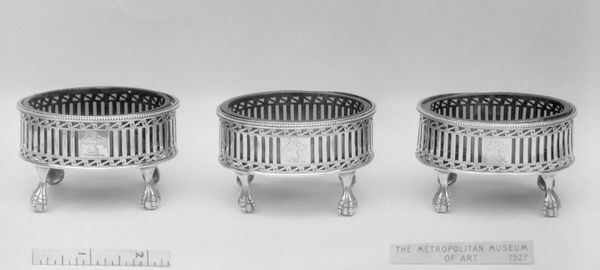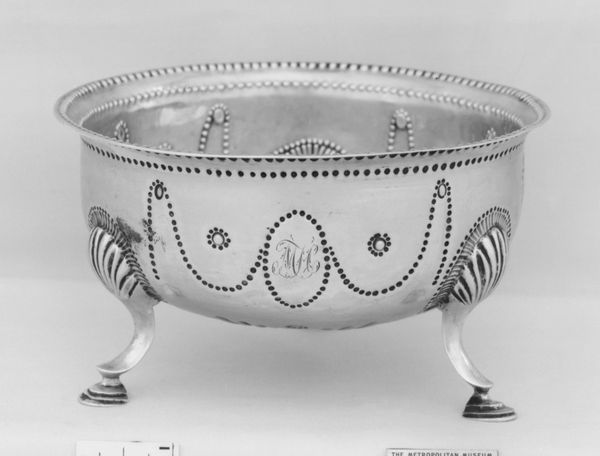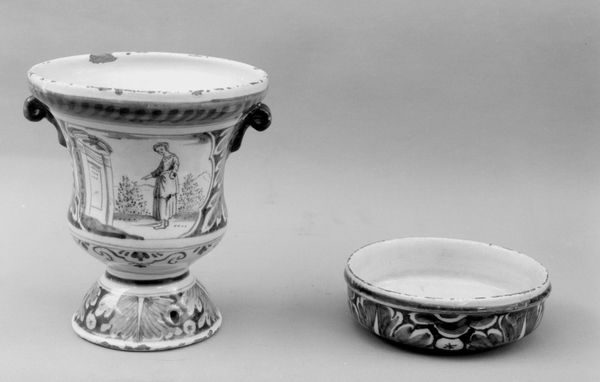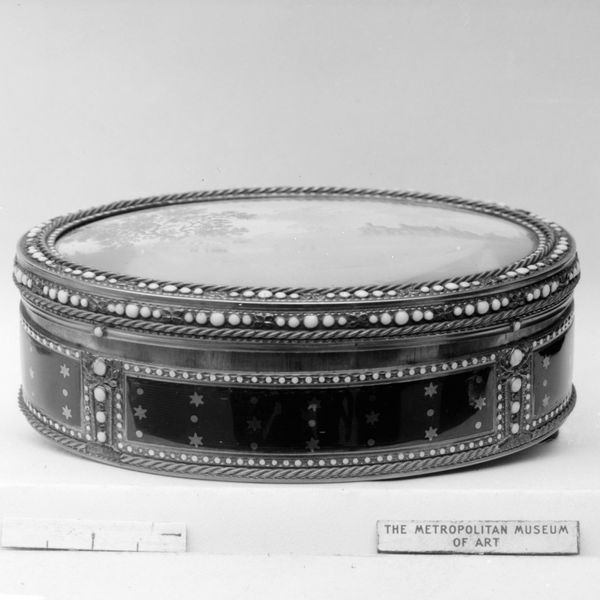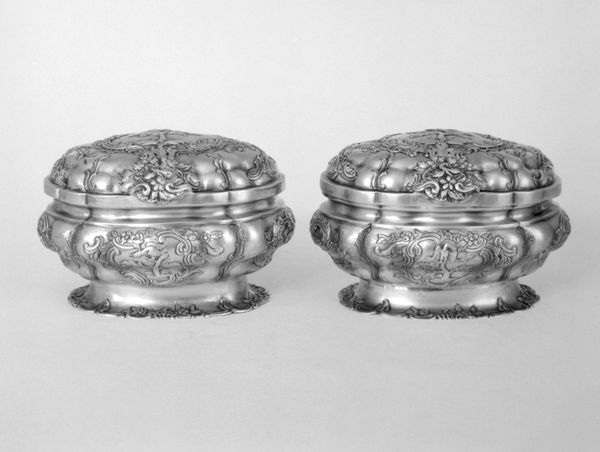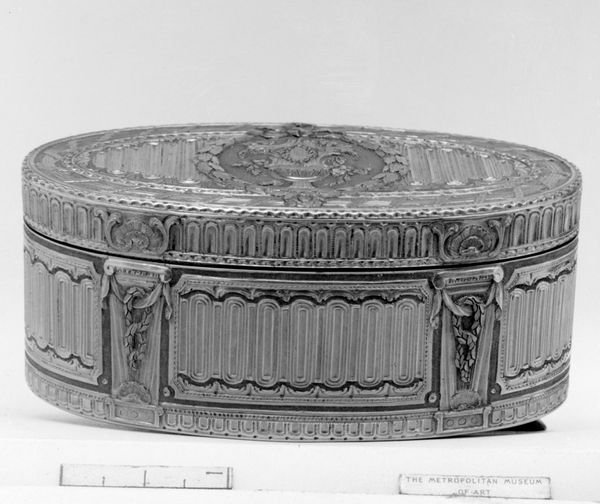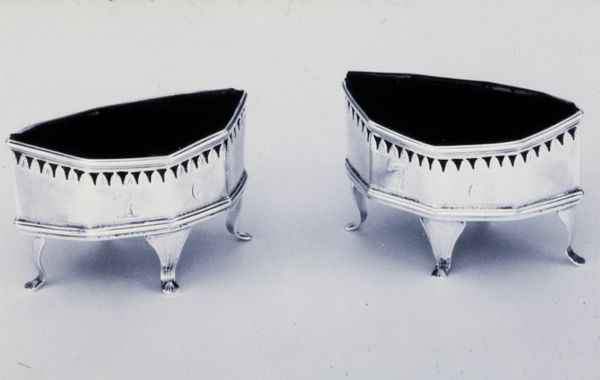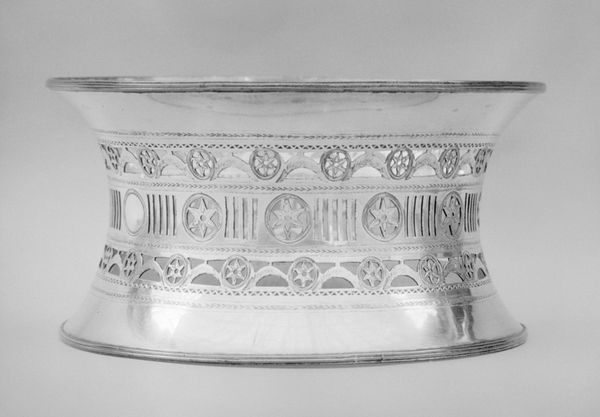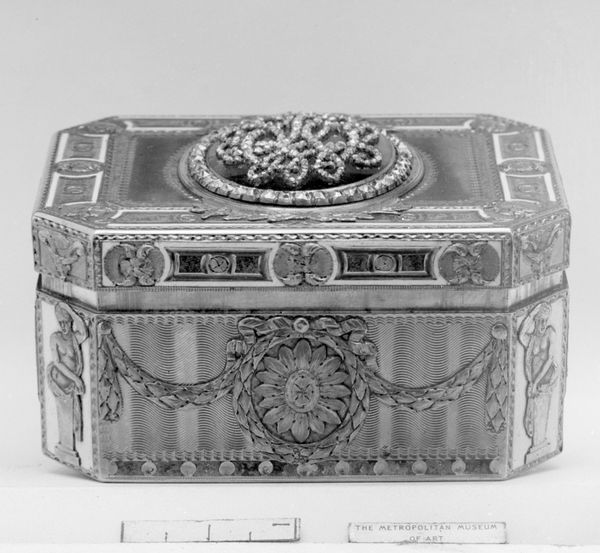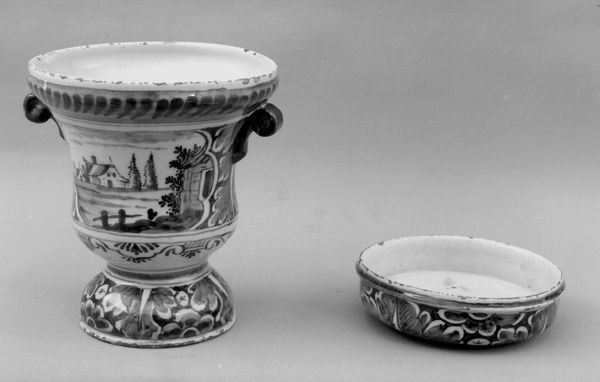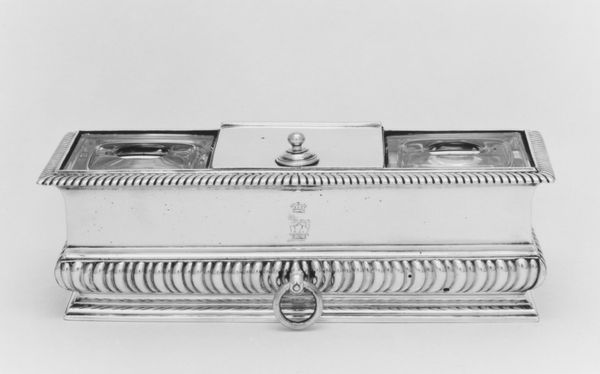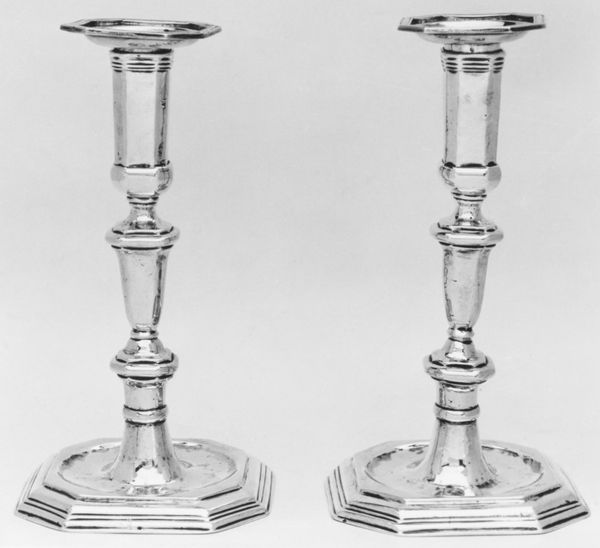
Dimensions: each: 2 × 2 1/2 × 3 1/2 in. (5.1 × 6.4 × 8.9 cm)
Copyright: Public Domain
Editor: Here we have a pair of silver saltcellars crafted by Edward Lowe between 1771 and 1772, currently held in the Metropolitan Museum of Art. They seem so delicate, and I’m struck by how such utilitarian objects can be elevated to such ornate designs. What stories do you think they whisper about the society that created them? Curator: They whisper of power, of course. Consider the late 18th century – a time of revolution brewing even as elite society reveled in excessive display. Salt, though a common substance to us now, was a commodity then, its presentation an indicator of wealth and status. Editor: So, these aren't just decorative, but function as social signifiers? Curator: Precisely. These saltcellars are a material expression of class distinctions. The Baroque style, even as it was fading, spoke to a desire for elaborate ornamentation, a visual language of privilege. The pierced silverwork, those delicate claw feet – imagine the artisan's skill, the patron's expectations. What does it mean, do you think, to literally elevate something as essential as salt onto a pedestal? Editor: I suppose it speaks to an almost theatrical level of consumption, a performance of wealth where even seasoning is a symbol. I never thought I'd look at a salt cellar and consider social stratification! Curator: Art offers us that potential – to dissect power structures, to unearth the hidden narratives within even the most seemingly innocuous objects. Think about the environmental impact of silver mining during this period, the exploitation of labor required to create such finery. These saltcellars aren't just beautiful objects; they are artifacts deeply embedded within complex social and economic networks. Editor: That's really given me a lot to think about – the hidden histories behind these objects. Thank you! Curator: My pleasure. It's vital to look at art beyond its surface beauty, interrogating its role in shaping our world.
Comments
No comments
Be the first to comment and join the conversation on the ultimate creative platform.
